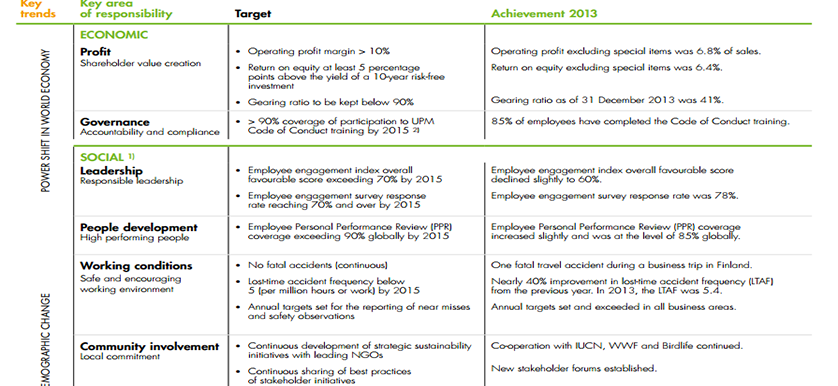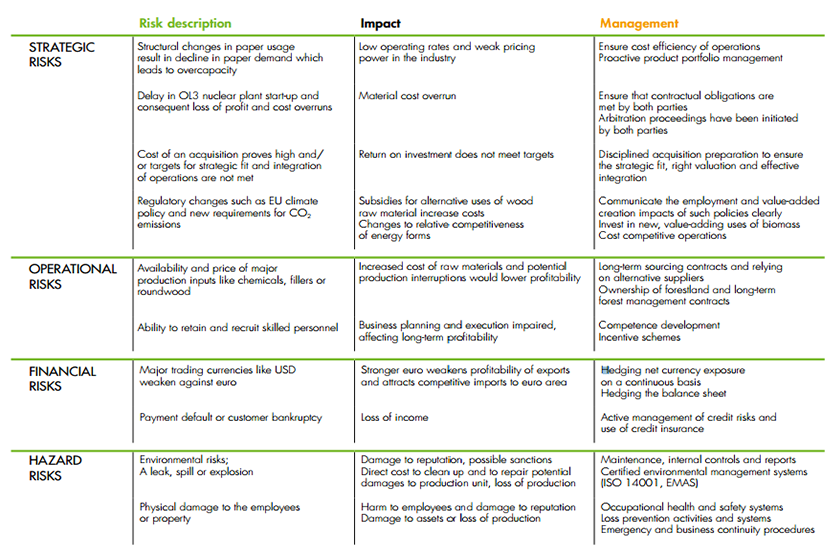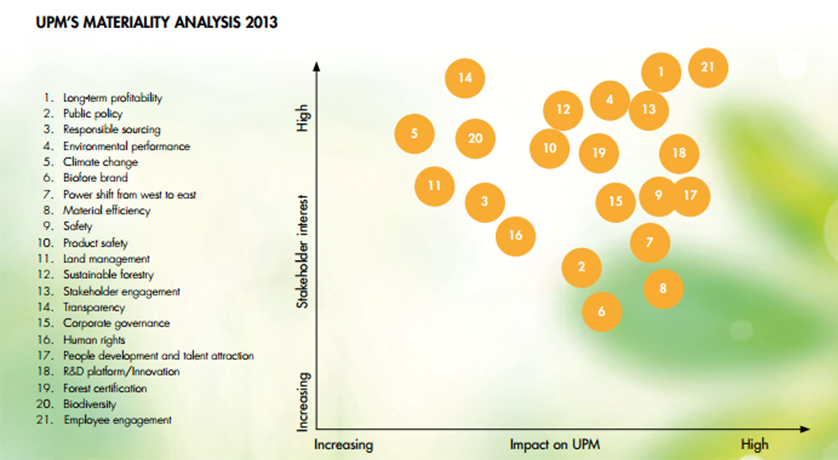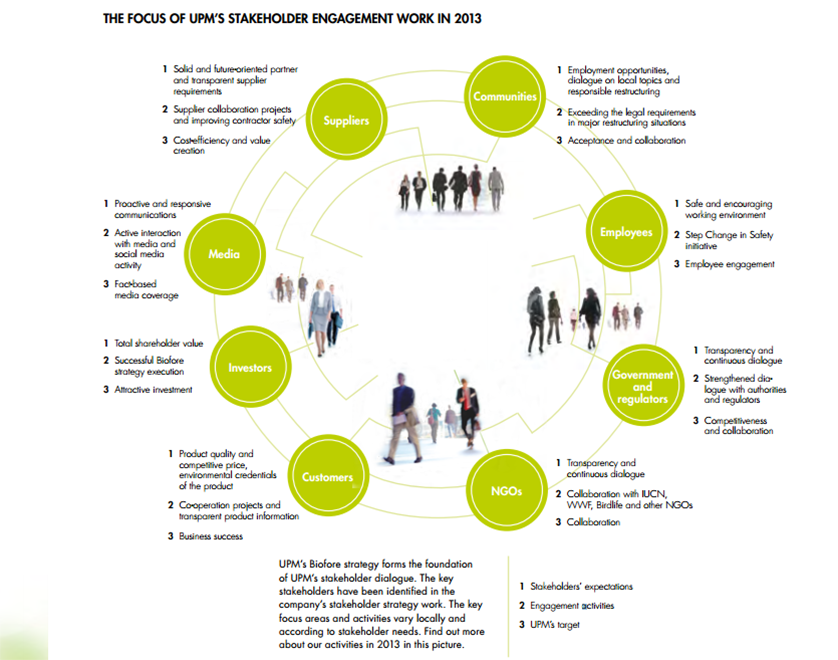UPM – the roadmap to performance
UPM is a company activating in the field of renewable and recyclable materials, having as vision to lead “the integration of bio and forest industries into a new, sustainable and innovation-driven future.” For 2013, the organization has established a set of targets, in order to attain progress in its key areas of responsibility. Rich insights on how UPM manages organizational performance can be gained from analyzing their Key Performance Indicators (KPIs) for the previous year.
The first assessed area, the economic one, has two major parts – profit and governance, each of them with several KPIs and targets.
The lack of standardization in terms of terminology may create confusion between the areas of responsibility, its subcategories and targets. According to The KPI Institute’s best practices, several measures are recommended for differentiating them: considering the areas of responsibility as perspectives, the subcategories as objectives, and splitting the target column in two parts: Key Performance Indicators and Targets (numbers attached to them). By using this new approach, the economic perspective would be redesigned as follows:
The other perspectives are social and environmental, each of them presenting the objectives, KPIs, targets and results. The above presented approach would bring more clarity and visibility upon what needs to be achieved and the final outcomes.
Ambitious targets need to be backed up by realistic risk management. The company is exposed to various threats that may negatively impact its business activities. The first step is to identify those risks and make sure actions are taken to maintain them under control.
Strategic, operational, financial and hazard related risks are the ones considered of a real importance for UPM. For a better risks assessment, however, the company should set and monitor Key Risk Indicators (KRIs), to help it spot the increasing risk exposure and prevent the occurrence of hazards. For example, to reduce the financial risk, the company may establish as an objective “Reduce payment default or customer bankruptcy”. To monitor the extent to which the objective is attained, a KPI, such as $ Obligations not paid, can be set. In the same time, a KRI can be established, such as % Customers in financial difficulty, whose increase signals that customers may have problems in repaying their debts.
The company already has a pro-active management, being open to understanding trends in the market, as well as customer and employee needs. As a result, in 2013, UPM has conducted a materiality analysis, by studying aspects such as: global sustainability, internal and external stakeholder satisfaction and risk mapping. In the graphic below, the above mentioned analysis is outlined, and it reveals that the main factors that both impact the company and raise stakeholders’ interest are long-term profitability and employee engagement.
As a result, UPM has a strong focus on engaging its stakeholders, not only its employees, but also its suppliers, customers, investors and any other person that has interest in the company, and maintaining them actively involved in the organization’s activities. To achieve this, UPM has set targets and undertakes specific actions to reach stakeholder expectations. Collaboration with customers, suppliers and employees is seen as a key factor for success and value generation.
Furthermore, the company places a great emphasis on protecting the environment, closely monitoring indicators such as: # Recycled waste, # Greenhouse gas emissions, # CO2 emissions and # Electricity consumption. Its interest towards sustainability is shown by the efforts it makes to report on the GRI index, which includes KPIs in four areas: economic, environmental, social and governance. Thus, UPM strives to achieve performance, while remaining environmentally friendly, to satisfy its shareholders, but also the community in which it activates, to maintain engaged personnel and train its employees at a high level. Although there is still place for improvement, the actual system has certain results that position the company on the right track to performance.
References
Images source:

Tags: Forest industry performance, Performance in Finland, Performance Management










